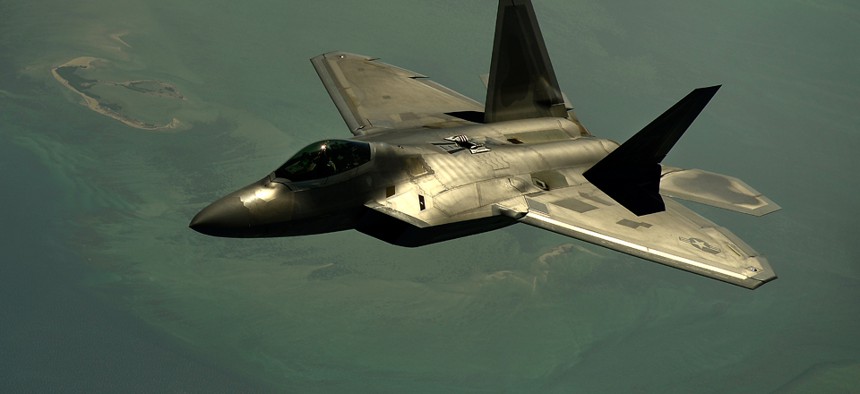
Defense Department file photo
Air Force Behind on Improvements to F-22 Fighter, Auditors Find
Greater progress achieved on simultaneous modernization effort.
The Air Force’s quarter-century-old F-22 tactical aircraft is being modernized satisfactorily, but the concurrent program to improve its capabilities is falling short because it lacks its own cost baseline, the Government Accountability Office said on Thursday.
The stealthy, highly maneuverable plane with advanced avionics and supersonic speed -- which cost $67 billion for 182 copies -- has been undergoing both a modernization and improvement process since 2003. GAO pointed to successful management of the modernization effort to achieve precise cost and schedule changes by treating the upgrades as “a major acquisition program with its own baseline cost and schedule estimate” as well as the use of contractors.
Less successful, auditors say, is the improvement effort known as the Reliability and Maintainability Maturation Program, which is not managed with its own baselines as required by the 2013 National Defense Authorization Act. The main challenges to capability upgrades are in maintenance. “Delays in completing depot-level maintenance have translated into delays in fielding modernization increments, which could also affect future increments,” GAO wrote. “Without a comprehensive baseline cost and schedule estimate for reliability efforts that encompasses the life of the aircraft across all types of funding, it is difficult to consistently track cost and schedule progress on projects that, to date, have cost almost $1 billion.”
Air Force managers note that the availability requirement for the F-22 is under review. “Any delay in revisiting this requirement could limit funding DoD might be able to make available for other high priority activities in a time of austere federal budgets,” GAO warned.
Auditors recommended that the Air Force incorporate comprehensive cost and schedule baselines for reliability projects in its annual report to Congress while accelerating the ongoing reassessment of the F-22 availability requirement. The Pentagon disagreed with the first recommendation, arguing that the Reliability and Maintainability Maturation Program cannot be base-lined like a weapons program because “there will be fluctuations in the cost based on life-cycle issues as the weapons system ages.”
The GAO report was prepared for the House Armed Services Subcommittee on Tactical Air and Land Forces.







